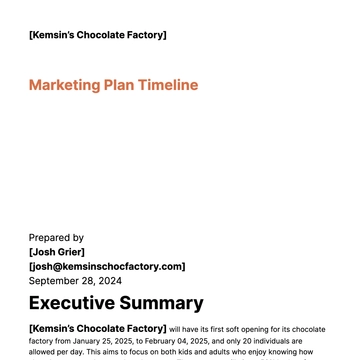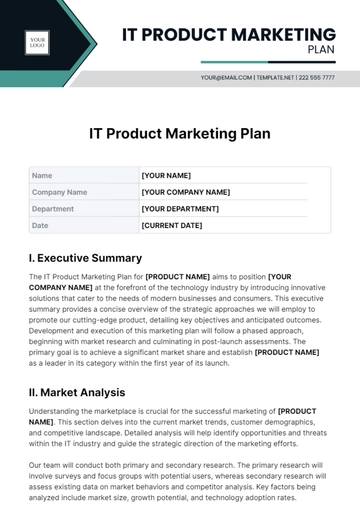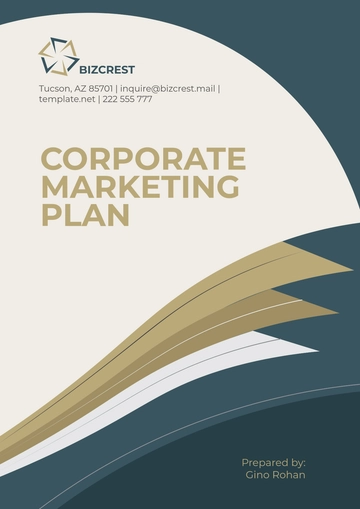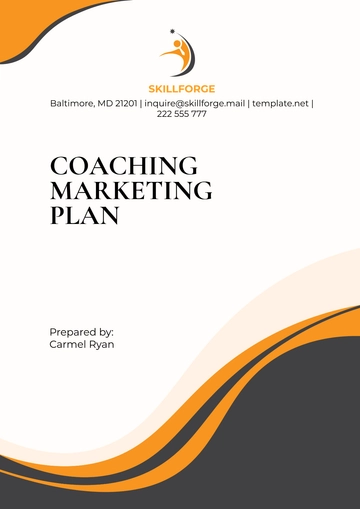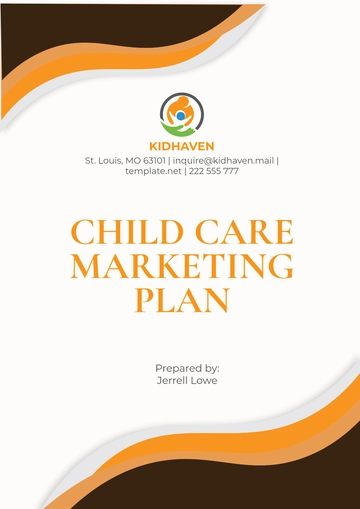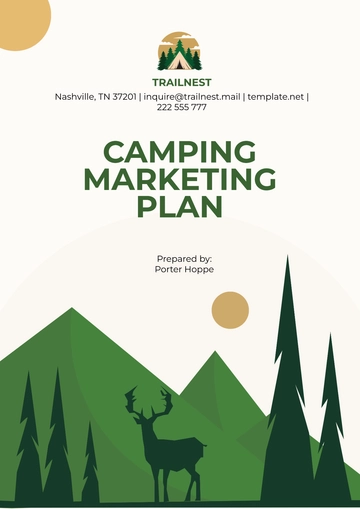Free Channel Marketing Plan

I. Executive Summary
In today's dynamic landscape, reaching target audiences requires a multi-faceted approach. This marketing plan outlines strategies to leverage various channels effectively, ensuring consistent messaging and optimal engagement. By utilizing online, offline, and partnership channels, [Your Company Name] aims to maximize visibility and drive conversion.
II. Market Analysis
Market analysis shows increasing consumer preference for personalized experiences, while competitor analysis highlights the importance of distinct messaging and strategic channel selection.
Consumer Behavior Trends: Understanding consumer interactions across various channels is crucial, emphasizing their preferences for personalization, convenience, sustainability, and digital engagement.
Digital Transformation: The proliferation of digital technologies has transformed the way businesses operate and interact with consumers. Market analysis today often involves assessing the impact of digital transformation on consumer behavior, purchasing patterns, and brand interactions.
Data Analytics and AI: Advanced data analytics tools and artificial intelligence (AI) are increasingly being used to extract insights from large datasets. Market analysis now encompasses predictive analytics, sentiment analysis, and customer segmentation based on real-time data.
Economic and Societal Trends: Market analysis extends beyond consumer behavior to encompass broader economic and societal trends. Factors such as demographic shifts, geopolitical developments, and environmental concerns can influence consumer preferences and purchasing decisions.
III. Target Audience
[Your Company Name] targets discerning travelers seeking immersive experiences tailored to their preferences. Segmentation analysis identifies key demographics and psychographics, enabling precise targeting across channels. Our primary audience comprises affluent professionals aged 25-45, with a penchant for adventure and cultural exploration.
IV. Channel Selection
A comprehensive channel mix includes online platforms such as the website, social media channels, and email campaigns, alongside offline channels like print ads, brochures, and events. Strategic partnerships with travel agencies and online booking platforms extend reach and credibility. Additionally, influencer collaborations and affiliate marketing initiatives amplify brand visibility and credibility among niche audiences.
V. Marketing Objectives
Increase online bookings by 20% within the next fiscal year through targeted SEO and PPC campaigns.
Enhance brand awareness by 30% through strategic print ad placements in premium travel magazines and participation in prominent travel events.
Secure partnerships with three prominent travel agencies and five high-traffic online booking platforms for increased distribution and referral traffic.
VI. Marketing Strategies
Tailored messaging and content creation for each channel ensure relevance and resonance with the target audience. Omni-channel integration facilitates seamless customer journeys, driving engagement and conversion. Social media content will highlight captivating travel stories, user-generated content, and exclusive offers, while email campaigns will deliver personalized travel recommendations and timely promotions.
VII. Action Plan
Q1: Launch website redesign to enhance user experience and optimize conversion paths. Initiate influencer outreach program.
Q2: Implement social media advertising campaigns targeting high-value segments. Roll out email marketing automation for lead nurturing.
Q3: Roll out print ad campaigns in select travel magazines and brochures at key events. Negotiate partnership agreements with travel agencies.
Q4: Launch an affiliate marketing program and optimize SEO strategy. Finalize partnerships with online booking platforms.
VIII. Budget
Allocations are as follows:
Online Channels: $50,000
Offline Channels: $30,000
Partnership Channels: $20,000
Influencer Marketing: $10,000
Affiliate Marketing: $5,000
IX. Risk Analysis
Potential risks include shifts in consumer preferences, competitive actions, and unforeseen external factors such as economic downturns or global crises. Mitigation strategies include agile response mechanisms and diversification of channel investments. Contingency plans are in place to adapt to evolving market dynamics and emerging trends.
X. Conclusion
By leveraging a diverse array of channels and continuously refining strategies based on data-driven insights, [Your Company Name] is poised to elevate brand presence, drive customer acquisition, and foster long-term loyalty in the competitive travel market.
- 100% Customizable, free editor
- Access 1 Million+ Templates, photo’s & graphics
- Download or share as a template
- Click and replace photos, graphics, text, backgrounds
- Resize, crop, AI write & more
- Access advanced editor
Enhance and Discover the ultimate tool for crafting your channel marketing strategy effortlessly with Template.net's Channel Marketing Plan Template. This editable and customizable gem simplifies the planning process, ensuring precision and efficacy. Seamlessly tailor your strategy to perfection using our Ai Editor Tool. Elevate your marketing game with unparalleled ease and finesse.

